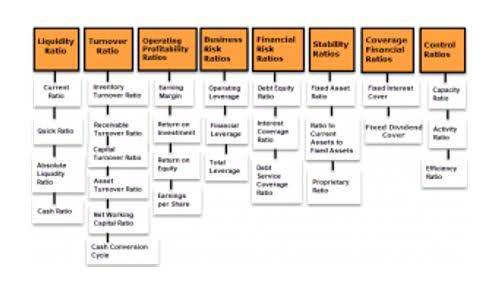
This example demonstrates the simplicity of the QBI deduction Outsource Invoicing when the taxpayer’s income is below the specified thresholds with no additional limitations. The qualified business income deduction was introduced in the Tax Cuts and Jobs Act (TCJA) of 2017 and was originally scheduled to expire at the end of 2025. However, the One Big Beautiful Bill Act, passed in July 2025, made the QBI deduction permanent as of 2026. Rental income may qualify if it rises to the level of a trade or business under IRS standards.
What is the formula for calculating the QBI deduction?
- After determining the taxpayer’s combined QBI amount, the overall limitation is applied.
- The full calculation, however, involves a multistep process that may phase out some or all of the deduction.
- The September Technology Q&A column shows how to create dynamic to-do lists with Excel’s checkboxes and also how to set up multifactor authentication texts that don’t rely on phones.
- The interplay between UBIA of qualified assets and your W-2 wages may lead to higher deductions in years where you invest heavily in property or maintain payroll, thus enhancing your overall tax efficiency.
- Qualified Business Income (QBI) allows many non-corporate taxpayers to deduct a portion of their business income.
- Form 8995 is for taxpayers with income below threshold limits, while Form 8995-A applies to more complex cases, including situations involving income above the thresholds or SSTBs subject to phase-outs.
- The Qualified Business Income deduction (also called the QBI deduction, pass-through deduction, or section 199A deduction) was created by the 2017 Tax Cuts and Jobs Act (TCJA) and is in effect for tax years 2018 through 2025.
The deduction is also available to you if you’re earning qualified REIT dividends or publicly traded partnership income. The QBI is not available to C corporations, which enjoy their own specific tax benefits. For sole proprietors, partnerships, LLCs, and S-Corporations, the QBI deduction currently offers one of the most valuable tax breaks—reducing taxable income by up to 20% without changing business operations. When the QBI deduction expires after 2025, this tax benefit will disappear, potentially increasing tax liability by thousands of dollars annually. The Qualified Business Income Deduction 2025 is subject to income-based phase-outs, which determine whether you can claim the full 20% deduction or a reduced amount. These thresholds are especially important for business owners whose income may hover near the cut-off levels.
- Taxpayers can manage these thresholds by strategies such as income deferral or retirement contributions to optimize their deduction.
- In 2024, single filers with taxable income above $182,100 see reduced benefits, with the deduction phasing out entirely by $232,100.
- However, once you combine (aggregate) businesses for QBI purposes, you must continue to combine them in future years.
- Our small business tax experts are always up to date with the latest tax laws and will ensure you get every credit and deduction possible, so you can put more money back into your business.
- If your business falls into the SSTB category, your ability to take the QBI deduction phases out once your income passes a certain limit, which we’ll cover below.
- Understanding how to properly apply this IRC section 199A qualified business income deduction guide requires examining multiple factors including income thresholds, business types, and various limitations.
Retirement Plans That Help Reduce Taxable Income
- A consulting firm (SSTB) expects $190,000 in taxable income for 2025 and has $30,000 in invoices due on January 2, 2026.
- These include the lesser of 20% of QBI or 50% of W-2 wages paid, or 25% of W-2 wages plus 2.5% of UBIA of qualifying property.
- This might involve converting sole proprietorships to single-member LLCs for liability protection or electing S corporation status to generate W-2 wages.
- The QBI is not available to C corporations, which enjoy their own specific tax benefits.
- For the 2024 tax year, the lower threshold is $191,950 for single filers and $383,900 for married taxpayers filing jointly.
- In this scenario, the deduction is simply 20% of the QBI from qualified trades or businesses, or 20% of the taxable income before the deduction, whichever is less.
This can be advantageous, especially when losses from some properties offset gains from others. Taxpayers should also consider the impact of carryover losses from previous years, as these can influence current-year calculations and future tax liability. Much of the Sec. 199A deduction’s complexity comes from congressional concerns of potential abuse. Undoubtedly, more administrative guidance will be issued to further define and clarify the law’s parameters (e.g., cloudy areas such as “reputation and skill” and definitions of specified service trades or businesses).

Can you claim qualified business income deductions on your rental property?
To qualify for the QBI deduction under Section 199A, the IRS defines a trade or business as any activity engaged in for profit with continuity and regularity. This broad definition includes activities ranging from retail operations to professional services, provided they are conducted with the intent to generate income. However, the IRS enforces guidelines to ensure only legitimate business activities benefit. The QBI deduction can help you reduce your tax bill as a small business owner, but it comes with some fine print. Knowing how your business type, income level, and expenses affect your eligibility can make a big difference when it’s time to file your income tax return.


Qualified property refers to tangible depreciable property used in the trade what qualifies as qualified business income or business, such as buildings and equipment. This limitation ensures businesses with substantial capital investment or significant payroll benefit more from the deduction at higher income levels. The final step is applying limit thresholds, which may reduce the deduction.
- This generally includes ordinary income generated from business operations, such as profits from a sole proprietorship reported on Schedule C, or an owner’s share of income from a partnership or S corporation.
- See Determining Your Qualified Business Income, earlier, and Tracking Losses or Deductions Suspended by Other Provisions, later.
- A qualified property refers to any tangible, depreciable asset that has not yet reached the conclusion of its depreciable lifespan.
- For instance, an individual offering legal advice or managing investment portfolios would be operating an SSTB.
How to claim the QBI deduction with TaxAct

But you won’t yet hit a hard limit based on the amount you’re paying out in wages to your employees — which does apply once you reach the second income threshold. Claiming the QBI deduction requires completing IRS Form 8995 or Form 8995-A. Form 8995 is for taxpayers with income below threshold limits, while Form 8995-A applies to more complex cases, including situations involving income above the thresholds or SSTBs subject to phase-outs.
Q. Do W-2 employees get the QBI deduction?
A separate business bank assets = liabilities + equity account helps distinguish personal and business transactions. Accurate records of depreciation schedules also affect net income and QBI calculations. Overall, the QBI deduction has been a boon for many small business owners, but it comes with strings attached.
